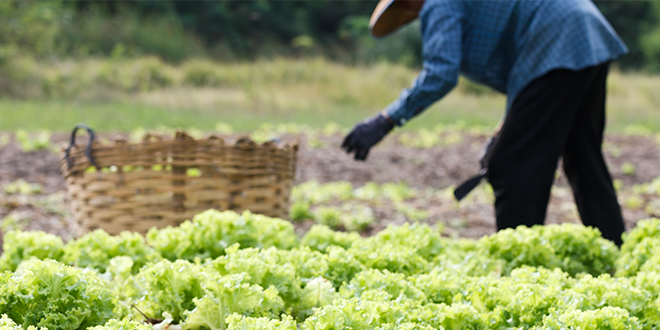Jun 8, 2016Labor shortages cause crop, sales losses
In recent years, Michigan’s vegetable growers have experienced crop and sales losses as a result of seasonal labor shortages. They’ve also passed on opportunities to expand production because of concerns about labor availability, according to a survey.
The Michigan Vegetable Council (MVC) commissioned the National Agricultural Statistics Service to conduct the survey for the 2014 crop year. Growers of 15 or more acres of vegetables were queried. A total of 580 vegetable operations took part in the survey, according to the survey report.
Michigan is ideally suited by climate and soils for growing a broad diversity of vegetables. By its nature, much of the production is labor-intensive. Over the years, the supply of seasonal labor to harvest and pack crops has fluctuated cyclically between adequate and tight. Today’s critical shortage is unprecedented, and demands action if growers are to stay competitive, according to the report.
“A number of factors have caused today’s needs for labor to exceed the supply,” according to the report. “Consumer demand for ‘locally grown’ produce, along with freight cost advantages over Western states, has strengthened the market for Michigan-grown fruit and vegetables. At the same time, some of the traditional migrant labor population has been ‘aging out,’ while some former farm workers have moved on to jobs outside of agriculture.”
A potential alternative, the federal H-2A guest-worker program, is “cumbersome, slow-moving and fraught with administrative perils to growers,” according to the report. “Until the last few years, H-2A was used by only a few growers in Michigan.”
The Michigan Workforce Development Agency has responded to the labor shortage by attempting to source farm workers from the domestic population. However, growers have not had much success with the attempts to find workers willing to perform traditional agricultural tasks, according to the report.
“The labor-intensive sector of the Michigan vegetable industry is at a crossroads and needs a clear understanding of its current position,” the report stated. “A critical mass of harvested production is required to sustain its infrastructure. Costly packing facilities need minimum volumes to maintain profitability. Reduced supplies and unfilled orders would harm the industry’s reputation and could cause Michigan to again become a last-resort or fill-in region for buyers. The produce trucking sector thrives on concentrated high- volume shipping points and could recast Michigan as an out-of-the-way supplier of fresh produce.”
Results
The survey reported a peak of 88 vegetable farms in September 2014 that needed additional workers. Vegetable growers reported losing sales of $6.6 million because of worker shortages.
“Although not measured in the survey, there are numerous accounts of sales lost from crops that were never planted because of concerns about labor availability,” according to the report. “The labor shortages occurred in spite of paying higher wages.”
The average hourly wage paid by the vegetable farms surveyed increased from $9.90 in 2013 to $10.40 in 2014.
The vegetable farms surveyed hired 4,000 migrant workers, which accounted for 63 percent of all seasonal workers. Of this total, 2,550 (64 percent) had been previously employed by the farm and 2,800 (70 percent) were provided housing.
Of the vegetable farms surveyed, 17 percent used want ads and other means to recruit locally, and 16 percent used agricultural employment specialists from state agencies (like Michigan Works!). Only 3 percent of the farms surveyed used H-2A as a source of workers in 2014.
Implications
According to MVC, labor concerns will continue to hamper production in Michigan. The supply of workers from the traditional migrant labor force will continue to decline in response to aging, along with a likely increase of enforcement efforts directed at workers not legally documented.
In spite of the cost and difficulties associated with the H-2A program, its use can be expected to increase. Michigan Farm Bureau started a pilot project in 2014, bringing in 90 H-2A workers for four fruit farms. Based on that experience, MFB started a new company, Great Lakes Ag Labor Services (GLALS), to provide compliance, application and worker services for growers using the H-2A program.
In 2015, GLALS served 10 fruit and vegetable farms and 405 workers. In 2016, the program is expanding to about 20 farms and 900 workers. In addition, other growers are working with independent contractors to bring in H-2A workers.
Partly because of increased use of H-2A workers, hourly labor costs will likely continue to increase. The minimum hourly wage for H-2A workers in 2015 was $11.56.
Growers will continue to look for ways to increase labor efficiency, both through efforts to retain the best seasonal workers each year and to develop or improve mechanical picking aids. Some growers will respond to opportunities to
grow vegetable crops that can be mechanically harvested, and others will downsize or get out of growing vegetables, according to MVC.
“Each farm in Michigan has its own story, but the common thread is that there is a decline in the number of workers available for seasonal agricultural work,” according to the report. “Many growers are still relying on historical relationships with a pool of worker families and facilitators that spans several generations of employees.
“Improved efforts by growers to recruit and retain labor continue to be the most promising solution to the labor crisis. Growers need to recognize that the ‘aging out’ of agricultural workers, changed family structures and competition for employees are ongoing trends.
“Solutions range from developing long-term relationships with labor contractors to providing new services and benefits to farm workers to using the H-2A program in some cases for seasonal labor needs,” according to the report.
— Gary Pullano, associate editor















